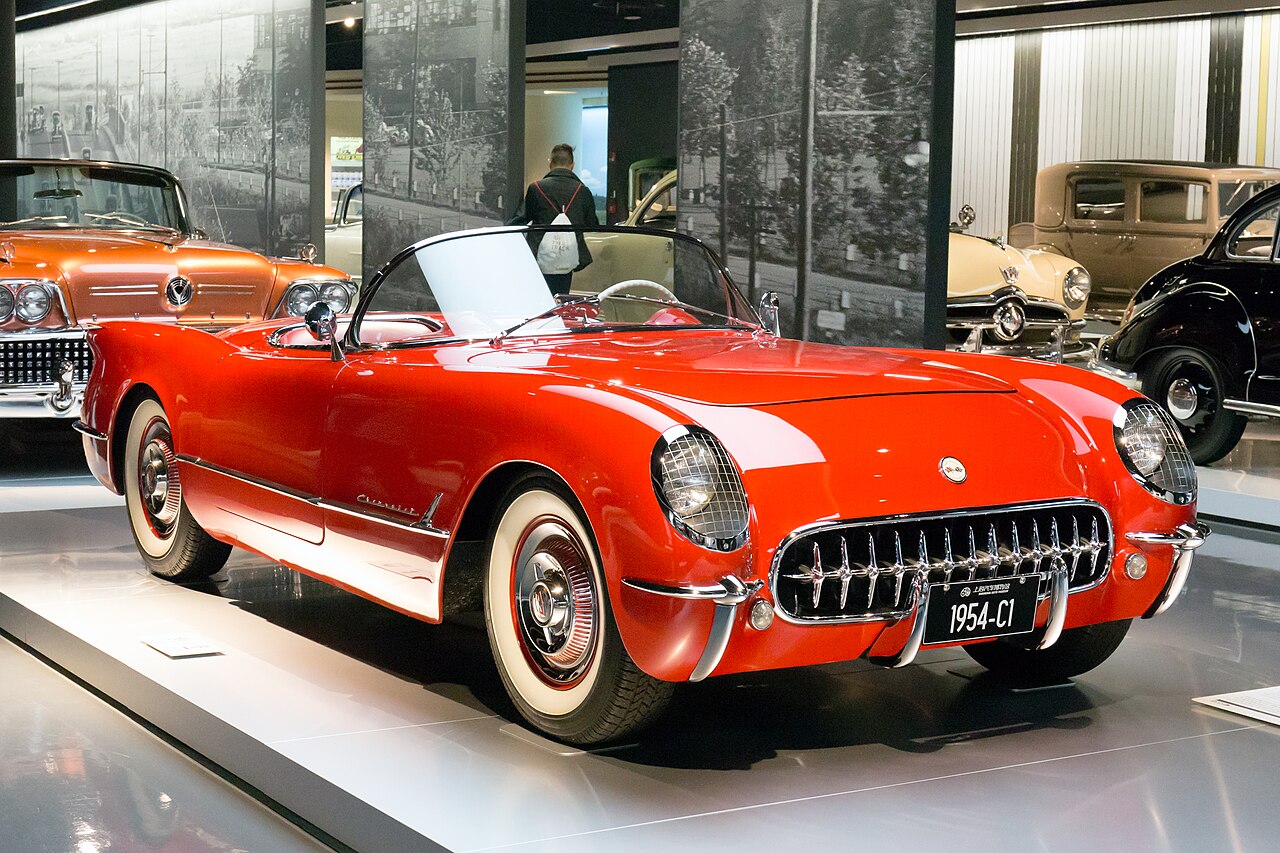Your cart is empty
Subtotal:$0.00

The Chevrolet Corvette, an iconic symbol of American automotive engineering, has evolved dramatically over the decades. From its debut in 1953 to the latest C8 model, each Corvette generation has brought distinct changes in design, performance, and technology. Here, we explore the differences between the C1 through C8 Corvette models, showcasing how this legendary sports car has transformed into the engineering marvel it is today.
The first-generation Corvette, known as the C1, was introduced in 1953. Designed as a two-seat convertible, it featured a fiberglass body—a revolutionary concept at the time. The C1 was initially powered by a modest 150-horsepower inline-six engine, paired with a two-speed Powerglide automatic transmission.
By 1955, Chevrolet introduced the small-block V8 engine, significantly boosting the Corvette's performance. The C1 underwent several design updates throughout its run, with the addition of quad headlights and a more aggressive look in 1958. Despite its humble beginnings, the C1 set the stage for the Corvette’s future as a performance car.
The C2, also known as the Sting Ray, marked a significant leap forward in both style and performance. Introduced in 1963, it featured a sleek, aerodynamic design with hidden headlights and a split rear window (available only in 1963). The split-window coupe became an instant classic and remains one of the most sought-after Corvette models today.
Under the hood, the C2 offered a range of V8 engines, including the legendary 427-cubic-inch big block. Independent rear suspension was introduced, improving handling and ride quality. The C2 solidified the Corvette's reputation as a true sports car and a serious competitor on the global stage.
The third-generation Corvette, or C3, brought a radical new design inspired by the Mako Shark II concept car. With its long hood, flowing curves, and removable T-top roof panels, the C3 exuded 1970s cool. Early models maintained the performance focus of the C2, with powerful 427 and 454 big-block engines available.
However, the oil crisis and stricter emissions regulations in the 1970s led to a decline in performance. By the late 1970s, the Corvette’s engines were significantly detuned, and focus shifted towards luxury features. Despite these challenges, the C3 remained a popular choice, becoming one of the best-selling Corvette generations.
After a brief hiatus in 1983, Chevrolet introduced the C4 Corvette, which emphasized modern technology and aerodynamics. The C4 featured a completely new chassis, digital instrumentation, and an advanced suspension system. Its wedge-shaped design was a departure from the curvier C3, giving it a futuristic appearance.
Performance improved throughout the C4’s production, with the introduction of the ZR-1 in 1990. Powered by a 375-horsepower LT5 engine developed in collaboration with Lotus, the ZR-1 showcased the Corvette’s potential as a high-performance machine. The C4 also marked the Corvette’s return to motorsport success, with numerous victories in endurance racing.
The C5 represented a significant step forward for the Corvette, combining impressive performance with everyday usability. Built on a new hydroformed steel frame, the C5 featured a lightweight and rigid structure. The LS1 V8 engine, producing 345 horsepower, delivered excellent performance and efficiency.
One of the key innovations of the C5 was its rear-mounted transaxle, which improved weight distribution and handling. The Corvette’s interior also saw improvements, offering more comfort and modern amenities. The C5 Z06, introduced in 2001, raised the bar with a 405-horsepower LS6 engine and track-focused enhancements.
The C6 built on the strengths of the C5 while addressing its weaknesses. The exterior design was more refined, with exposed headlights returning for the first time since the C1. The C6’s LS2 engine delivered 400 horsepower, with later models receiving the 430-horsepower LS3.
The introduction of the Z06 in 2006 and the ZR1 in 2009 brought incredible performance to the lineup. The Z06 featured a 505-horsepower 7.0-liter LS7 engine, while the ZR1’s supercharged LS9 produced an astonishing 638 horsepower. Advanced materials like carbon fiber and aluminum were used extensively, showcasing Chevrolet’s commitment to cutting-edge engineering.
The C7 marked the return of the Stingray name and introduced a bold new design. With sharp lines, aggressive styling, and advanced aerodynamics, the C7 was a head-turner. Under the hood, the LT1 V8 engine produced 455 horsepower, offering impressive performance straight out of the box.
Chevrolet also introduced the Z06 and ZR1 models during the C7’s run. The C7 Z06 featured a supercharged LT4 engine with 650 horsepower, while the ZR1 pushed the envelope with 755 horsepower from its LT5 engine. The C7 was praised for its exceptional handling, thanks to its advanced suspension systems and Magnetic Ride Control. We have a wide range of parts for the C7 Corvette.
The eighth-generation Corvette, or C8, represents the most radical departure from tradition in the model’s history. For the first time, the Corvette features a mid-engine layout, bringing it closer to European supercars in terms of performance and design. The C8’s LT2 V8 engine, producing 495 horsepower with the Z51 package, is mounted behind the driver for improved balance and handling.
The C8 offers a sleek, futuristic design, with sharp lines and aggressive proportions. Inside, the driver-focused cockpit features high-quality materials and advanced technology, including a customizable digital instrument cluster. The C8 Z06, introduced in 2023, takes performance to new heights with a 670-horsepower flat-plane crank V8 engine. Our friends at RPI Designs also manufacture many parts for the C8 Corvette.
Each Corvette generation has brought unique innovations and advancements, reflecting the changing tastes and technologies of their respective eras. From the classic lines of the C1 to the groundbreaking mid-engine design of the C8, the Corvette’s evolution is a testament to Chevrolet’s commitment to pushing the boundaries of performance and design.
Whether you’re a fan of the vintage charm of the C1, the raw power of the C3, or the cutting-edge technology of the C8, there’s no denying the Corvette’s enduring appeal. As the Corvette continues to evolve, it remains a symbol of American ingenuity and a favorite among car enthusiasts worldwide.
© 2007 - 2025 Southern Car Parts. All rights reserved.
Powered by X-Cart
